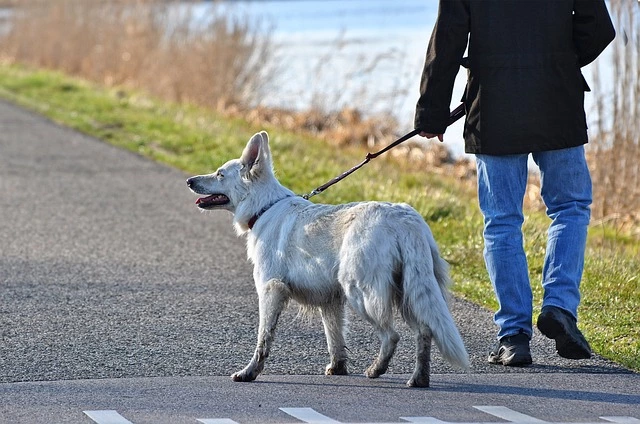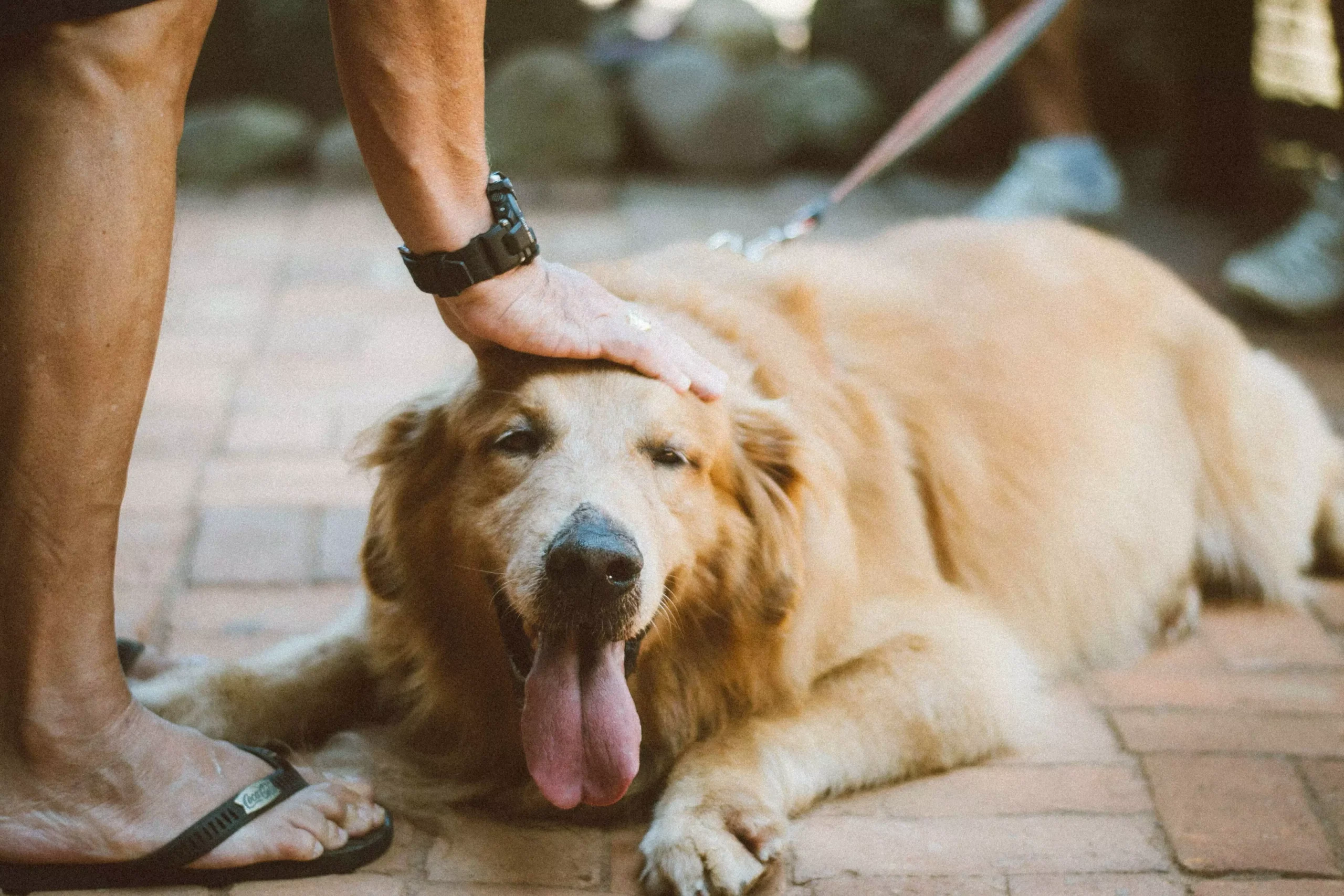*by [Your Name]*
Introduction:
leash pulling is a common behavior problem that many dog owners face. Not only does it make walking your dog a less enjoyable experience, but it can also be dangerous for both you and your pet. In this article, we will discuss effective techniques to prevent and address leash pulling, ensuring that your walks become more pleasant and stress-free.
I. Understanding the Root Causes of Leash Pulling
1.1. Instinctual Tendencies: Why dogs pull on the leash
Dogs have a natural instinct to explore their surroundings and investigate interesting scents or objects. This instinct can lead to leash pulling as they try to reach these stimuli. Understanding this instinctual tendency is crucial in addressing leash pulling.
1.2. Common triggers for leash pulling behavior
Identifying the triggers that cause your dog to pull on the leash is essential in preventing and addressing this behavior. Common triggers include other dogs, people, squirrels, or even unfamiliar smells.
1.3. The importance of addressing leash pulling early on
It is crucial to address leash pulling early on to prevent the behavior from becoming ingrained. The longer you wait to address it, the more difficult it may be to correct.
II. Prevention Techniques: Setting the Foundation for Leash Manners
2.1. Choosing the right equipment: collars, harnesses, and leashes
Selecting the appropriate equipment for leash training is vital. Collars and harnesses that distribute pressure evenly are recommended to avoid potential injury to your dog’s neck.
2.2. Establishing basic obedience commands
Teaching your dog basic obedience commands such as “sit,” “stay,” and “heel” lays the foundation for leash manners. These commands help you maintain control during walks and discourage leash pulling.
2.3. The significance of positive reinforcement in leash training
Positive reinforcement, such as treats or praise, is a powerful tool in leash training. Rewarding your dog for walking calmly beside you encourages them to continue exhibiting the desired behavior.
III. Step-by-Step Training Methods to Address Leash Pulling
3.1. Loose leash walking: Teaching your dog to walk beside you
One effective technique is teaching your dog to walk beside you with a loose leash. This involves rewarding your dog for staying close and stopping when they start to pull.
3.2. Stop and go technique: Reinforcing good walking behavior
The stop and go technique involves stopping whenever your dog starts to pull and only resuming walking when they loosen the leash. This teaches your dog that pulling leads to an interruption in the walk.
3.3. Changing directions: Redirecting your dog’s attention
When your dog begins to pull, abruptly change directions. This redirects their attention back to you and encourages them to stay focused on walking beside you.
3.4. Clicker training and its role in leash training
Clicker training can be a useful tool in leash training, as it allows for precise timing when rewarding your dog for desired behavior. The clicker serves as a signal that a reward is coming.
3.5. Patience and consistency: Keys to successful leash training
Consistency and patience are crucial in leash training. It may take time for your dog to learn and understand the desired behavior, so it’s important to remain consistent in your training methods.
IV. Common Challenges and Troubleshooting
4.1. What to do if your dog pulls towards other dogs or people
If your dog pulls towards other dogs or people, it is important to redirect their attention and reward them for walking calmly beside you. Desensitization techniques can also be helpful in reducing their excitement.
4.2. Addressing distractions during walks
Distractions during walks can trigger leash pulling. Gradually exposing your dog to distractions and rewarding them for maintaining calm behavior can help address this challenge.
4.3. Dealing with stubborn leash pullers
Some dogs may be more stubborn and resistant to leash training. In such cases, seeking guidance from a professional dog trainer can be beneficial in developing a customized training plan.
4.4. Tips for walking multiple dogs without leash pulling
When walking multiple dogs, it is important to establish individual leash manners for each dog. Using separate leashes and teaching each dog to walk calmly beside you can prevent leash pulling.
FAQs: Frequently Asked Questions
Q1. How long does it take to train a dog not to pull on the leash?
The time it takes to train a dog not to pull on the leash can vary depending on the dog’s age, breed, and previous training. Consistency and regular practice are key to achieving desired results.
Q2. Can certain breeds be more prone to leash pulling?
Some breeds, such as huskies or hounds, may have a higher tendency to pull on the leash due to their natural instincts. However, with proper training and consistency, leash pulling can be addressed in any breed.
Q3. Is it better to use a collar or a harness for leash training?
The choice between a collar and a harness depends on your dog’s individual needs. Harnesses are generally recommended, as they distribute pressure more evenly and minimize the risk of injury to the neck.
Q4. My dog pulls excessively even with proper training. What should I do?
If your dog continues to pull excessively despite proper training, it may be helpful to consult with a professional dog trainer. They can assess the situation and provide guidance on more specialized training techniques.
Q5. Are there any specific tips for leash training puppies?
Leash training should be introduced gradually to puppies, starting with short and positive training sessions. Using treats and positive reinforcement can help create a positive association with the leash.
Q6. Should I hire a professional dog trainer to address leash pulling?
If you are struggling with leash pulling and have not been successful in addressing the behavior on your own, hiring a professional dog trainer can provide you with the expertise and guidance needed to overcome this challenge.
Conclusion:
By understanding the root causes of leash pulling and implementing the right training techniques, you can effectively prevent and address this unwanted behavior. Remember, consistency, patience, and positive reinforcement are key to successful leash training. With time and dedication, you and your dog can enjoy peaceful and enjoyable walks together.









